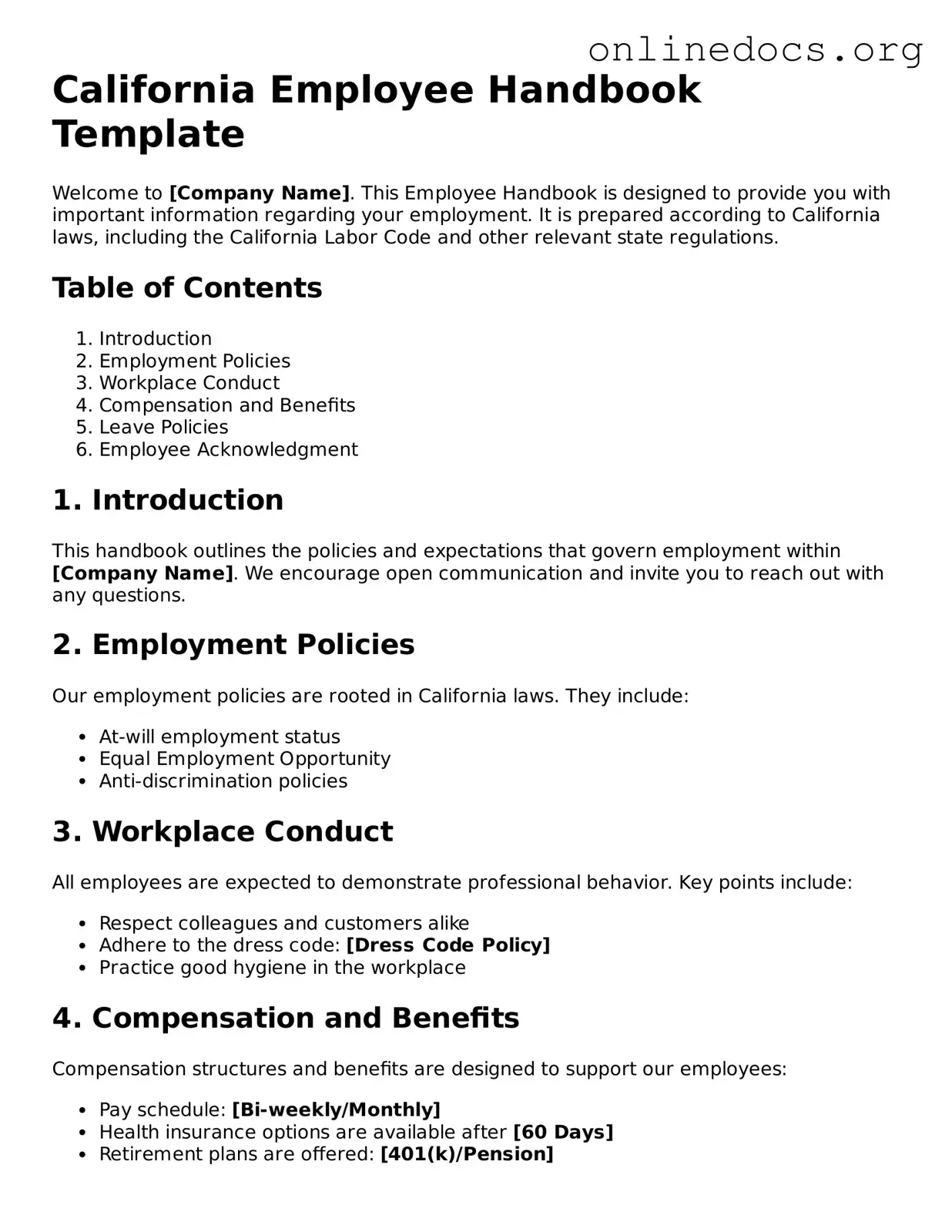The California Employee Handbook form is similar to the Employee Policy Manual. Both documents outline the expectations, rights, and responsibilities of employees within an organization. They serve as a guide for employees to understand workplace policies, including attendance, dress code, and disciplinary procedures. The Employee Policy Manual often provides more detailed explanations of specific policies and procedures, making it a vital resource for both employees and management in maintaining consistent practices within the workplace.
Another document comparable to the Employee Handbook is the Onboarding Guide. This guide is typically provided to new employees during the hiring process. It includes essential information about the company culture, benefits, and initial training requirements. While the Employee Handbook serves as a comprehensive reference for ongoing employment, the Onboarding Guide focuses on helping new hires acclimate to their roles and understand the company's expectations from the outset.
A Texas Quitclaim Deed form is a legal document used to transfer interest in real property from one person to another without any warranties of title. This means that the seller, known as the grantor, does not guarantee they hold clear title to the property. It's a common tool for transactions among family members or to quickly change names on a property title. For further details, you can visit legalformspdf.com.
The Code of Conduct is also similar to the California Employee Handbook. This document specifically outlines acceptable behaviors and ethical standards expected from employees. It addresses issues such as harassment, discrimination, and conflict of interest. While the Employee Handbook may cover these topics in a broader context, the Code of Conduct provides a more focused approach to maintaining professionalism and integrity within the workplace.
The Employee Manual is another document that shares similarities with the Employee Handbook. Both documents detail company policies, benefits, and procedures. However, the Employee Manual often includes more comprehensive sections on employee rights, workplace safety, and compliance with labor laws. This makes it a crucial tool for ensuring that both employees and employers are aware of their legal obligations and rights in the workplace.
Finally, the Safety Manual is akin to the California Employee Handbook, particularly in its focus on workplace safety and health regulations. This manual outlines safety protocols, emergency procedures, and reporting mechanisms for workplace hazards. While the Employee Handbook may include a section on safety, the Safety Manual provides a more detailed and specialized approach to ensuring a safe working environment for all employees.
